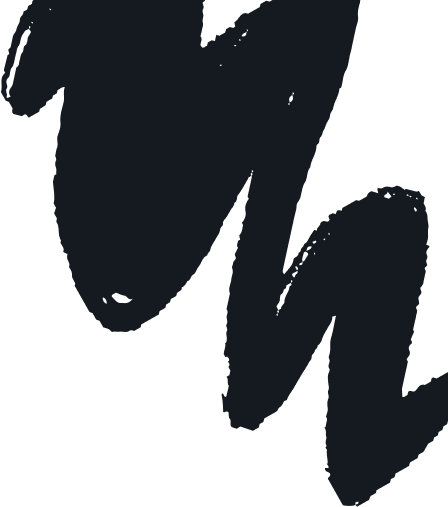
Homeschool Kindergarten Without Walls: Freedom as the Ultimate Curriculum
Homeschool Kindergarten Without Walls: Freedom as the Ultimate Curriculum
Homeschool Kindergarten Without Walls: Freedom as the Ultimate Curriculum
The modern kindergarten landscape resembles an academic arms race. Coding classes for five-year-olds. Mandarin immersion programs with entrance exams. "Early literacy" apps promising to transform your preschooler into a fluent reader before they can tie their shoes.
Parents feel the pressure. The $10+ billion homeschool curriculum industry creates impressive marketing materials showing beaming children completing advanced work, making it easy to believe your kid might be falling behind if they're still just playing with blocks and digging in dirt.
Yet beneath this acceleration lies a compelling counternarrative: what if freedom, not structure, creates the strongest foundation for learning?
The Kindergarten Curriculum Paradox
The parental anxiety is legitimate. Late at night, the questions surface: Is my child on track? Will choosing the wrong approach put them at a disadvantage? Should I invest in that comprehensive curriculum package with the color-coded lesson plans and achievement benchmarks that would make a corporate CEO sweat?
Curriculum developers offer solutions wrapped in certainty - systematic approaches promising to guide children step-by-step toward academic success. Some of these programs contain valuable elements and thoughtful sequencing. The best ones incorporate play and hands-on learning alongside more structured activities.
But they rarely acknowledge what developmental research has been telling us for decades. Dr. Raymond Moore, after extensive studies of child development, observed that many children are not developmentally ready for formal academics until age 8-10. Pushing academics too early can create unnecessary frustration and may actually delay a child's progress.
The American Academy of Pediatrics backs this perspective. They emphasize that young children learn most effectively through play, exploration, and social interaction - precisely the activities that get squeezed out when academic expectations intensify.
Perhaps we've been framing "kindergarten readiness" all wrong. Instead of asking whether children are ready for particular curricula, the more important question might be: Is this educational approach aligned with how young children actually develop and learn?
When Freedom Produces Genius: The Ansel Adams Case
Consider Ansel Adams, whose breathtaking photographs of American landscapes have inspired generations. Few people realize that Adams' genius wasn't forged through rigorous schooling—quite the opposite.
As Kerry McDonald documented for the Foundation for Economic Education, Adams was hyperactive and struggled terribly in traditional classrooms. In his autobiography, he describes feeling trapped: "Each day was a severe test for me, sitting in a dreadful classroom while the sun and fog played outside."

Recognizing his son's misery, Adams' father made a bold decision: he removed 12-year-old Ansel from school entirely. Instead of formal lessons, he gave him a year's pass to the 1915 World's Fair and told him "that would be his school." The family also took a trip to Yosemite Valley, where his parents gave him his first camera—a decision that would shape not just Ansel's life but American art history.
Adams later reflected: "I often wonder at the strength and courage my father had in taking me out of the traditional school situation and providing me with these extraordinary learning experiences. I trace who I am and the direction of my development to those years of growing up in our house on the dunes, propelled especially by an internal spark tenderly kept alive and glowing by my father."
This isn't just a heartwarming anecdote. As standardized education has become increasingly test-focused, American creativity scores have steadily declined since 1990, with the sharpest drop occurring in elementary-age children. The implications are profound when we consider that many of today's most in-demand jobs didn't even exist a decade ago.
We're preparing children for a future we can't possibly predict – except that it will reward exactly the qualities that standardized education tends to suppress.
Get Your Free Curriculum Guide 🌟
Overwhelmed by curriculum choices? Our free guide helps you navigate options and find the perfect fit for your child's unique learning style. We'll help you cut through the noise and focus on what matters.
The Three C's of Real Learning
Meaningful education happens when three critical elements converge:
1. Choice: Some level of control over how, what, and when learning happens
Five-year-olds who have agency in their learning develop intrinsic motivation. Psychology professor Dan Ariely's research confirms what most parents already know: a person's willingness to work hard at something is directly tied to how meaningful they perceive the task to be.
In practice, this means following a child's natural curiosity about insects might lead to more valuable learning than forcing them through a prescribed science curriculum they have no interest in.
2. Competency: Adequate time, resources, and support to develop mastery
Imagine learning to ride a bike on someone else's timetable: "You have 45 minutes to master balance, steering, and braking. If you haven't achieved proficiency by the bell, you'll be labeled 'behind' regardless of your previous experience with wheeled toys."
Sounds absurd? This is exactly how we approach reading, writing, and math in conventional kindergarten settings.
3. Connection: Learning topics that actually matter to the learner
When children explore topics they're genuinely curious about, they develop the authentic motivation to acquire reading, writing, and math as tools to pursue those interests – not as isolated subjects to endure.
A child fascinated by dinosaurs will eagerly learn to read dinosaur books, count and sort dinosaur figures, and write dinosaur stories. The academics become a means to a meaningful end, not the end itself.
Creating Your Homeschool Kindergarten Without Walls
A "kindergarten without walls" isn't about absence of structure – it's about creating boundaries flexible enough to expand with a child's curiosity while providing the security of consistent guidance.
Observation: Your Most Powerful Tool
Before investing in curriculum, invest time in watching your child. What lights them up? When do they become frustrated? What do they return to repeatedly without prompting?
Charlotte Mason, the influential British educator, emphasized: "The most valuable knowledge children can receive is self-knowledge, gained through careful observation of their own mental processes."
Keep a simple learning journal—not to grade or evaluate, but to notice patterns. Did your child spend an hour examining insects in the backyard? That's biology. Are they constantly rearranging toys by size, color, or type? That's classification and early mathematics. Have they memorized every word of their favorite storybook? That's emerging literacy.
This documentation helps you recognize learning that might otherwise go unnoticed and builds confidence in your child's natural development.
Creating Environments That Invite Discovery
Your home becomes a learning laboratory when thoughtfully arranged to invite exploration. This doesn't require expensive educational materials—some of the most powerful learning tools are the simplest:
- A cozy reading nook with quality picture books
- A nature table for examining treasures from outdoor adventures
- An art area with real materials (not just coloring books)
- A building space with blocks and loose parts
- A dramatic play area that can transform based on interests
The key is accessibility—materials should be available without constant adult permission—and rotation. Rather than overwhelming with too many choices, curate materials thoughtfully and change them periodically.
Rhythms Instead of Schedules
Structure doesn't have to mean rigid timetables. Think in terms of gentle rhythms that provide security while allowing flexibility:
- Morning gathering for stories and conversation
- Outdoor exploration time (rain or shine)
- Creator time for art, building, or imaginative play
- Read-aloud sessions spread throughout the day
- Helper time for meaningful participation in household tasks
These rhythms provide the security of predictability without the pressure of specific academic accomplishments on a predetermined timeline.
The Basics in Homeschool Kindergarten
The question every homeschooling parent eventually faces: "But how will they learn to read/write/calculate if we don't use a formal curriculum?"
First, recognize that the normal age range for reading readiness spans from roughly 4 to 10 years. Pushing reading instruction before a child shows signs of readiness often creates frustration and resistance.
Dr. Peter Gray, research psychologist and author of "Free to Learn," has documented numerous cases of children who learned to read with minimal formal instruction.
In case after case, he found that children who had the freedom to explore and play, and who lived in homes where reading was valued and practiced, learned to read by age 7 to 10 with no formal instruction at all. Most importantly, they maintained their love of reading because it was never turned into a chore.
We're not saying you have to go to this extreme of zero formal instruction, but rather than focusing on worksheets and drills, try focusing on creating a language-rich environment:
- Read aloud daily from high-quality literature
- Play with language through rhymes, songs, and wordplay
- Answer questions about letters and words when they arise naturally
- Model reading and writing in your everyday life
For writing, remember that young children are still developing the fine motor control necessary for handwriting. Instead of forcing pencil grip, offer:
- Plenty of opportunities for drawing and art exploration
- Dictation where you write down their stories
- Meaningful writing experiences like cards for relatives or shopping lists
- Large-scale writing experiences (chalk on sidewalks, finger painting)
Mathematics in kindergarten should focus on developing number sense, not memorizing facts. Look for math in everyday life:
- Counting everything from stairs to strawberries
- Sorting laundry, toys, or nature finds
- Measuring ingredients while cooking
- Playing board games that involve counting and strategy
The key is to remain attentive to your child's development and introduce more formal instruction when they show readiness and interest—not because a curriculum schedule says it's time.
The Courage to Preserve the "Internal Spark"
Choosing a different path for your child's kindergarten year requires courage. It means resisting cultural pressure for early academics and trusting your child's natural development. It means answering questions from well-meaning family members who don't understand why your five-year-old isn't bringing home worksheets.
But return to Ansel Adams' reflection on his father's decision:
"I trace who I am and the direction of my development to those years of growing up in our house on the dunes, propelled especially by an internal spark tenderly kept alive and glowing by my father."
That "internal spark"—the natural curiosity, creativity, and joy in learning that all children are born with—is precisely what conventional education too often extinguishes. In an unpredictable future that will demand creativity, adaptability, and self-direction, that preserved spark may be the greatest educational advantage you can give your child.
The curriculum will always be there if you need it. The worksheets aren't going anywhere. But a child's natural love of learning, once crushed, is much harder to revive.
Join Our Community of Educational Innovators
Join our community of forward-thinking families who are reimagining education to honor each child's unique strengths, interests, and learning style. Subscribe to our daily newsletter for more resources, tools, and inspiration to support your family's educational journey.
Subscribe to The OpenEd Daily
Join 20,000+ families receiving curated content to support personalized learning, every school day.
.webp)
.avif)


.png)
.png)
